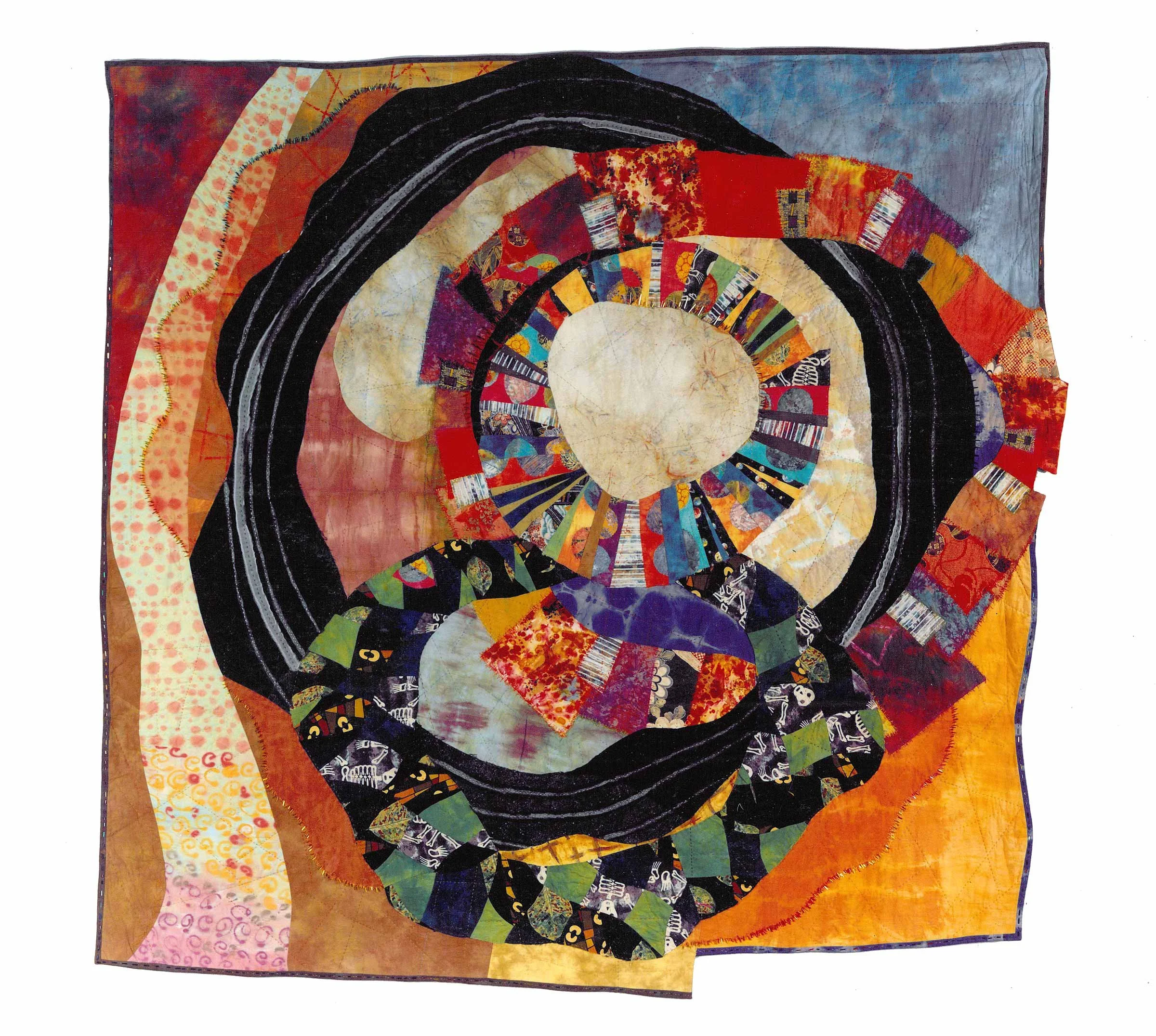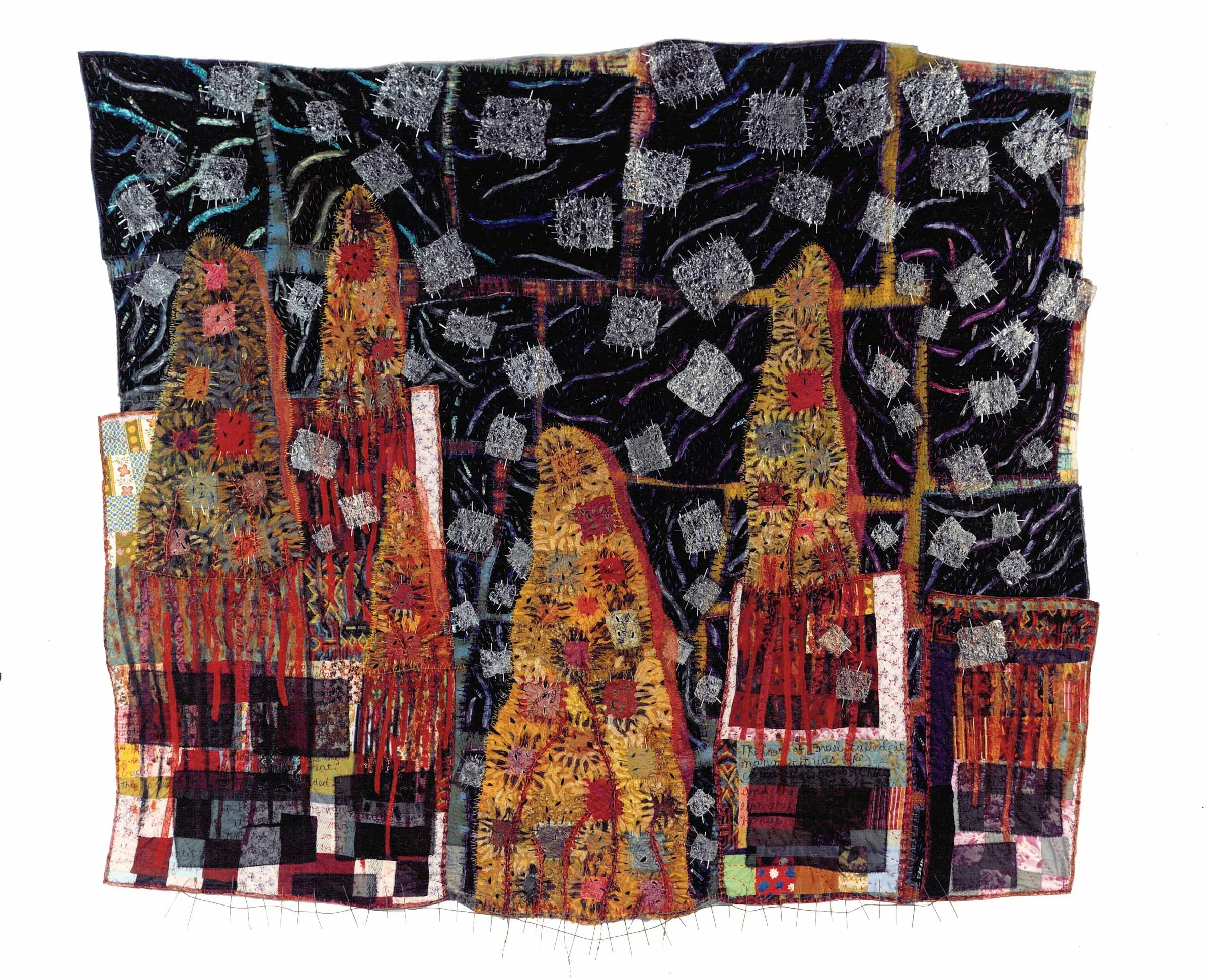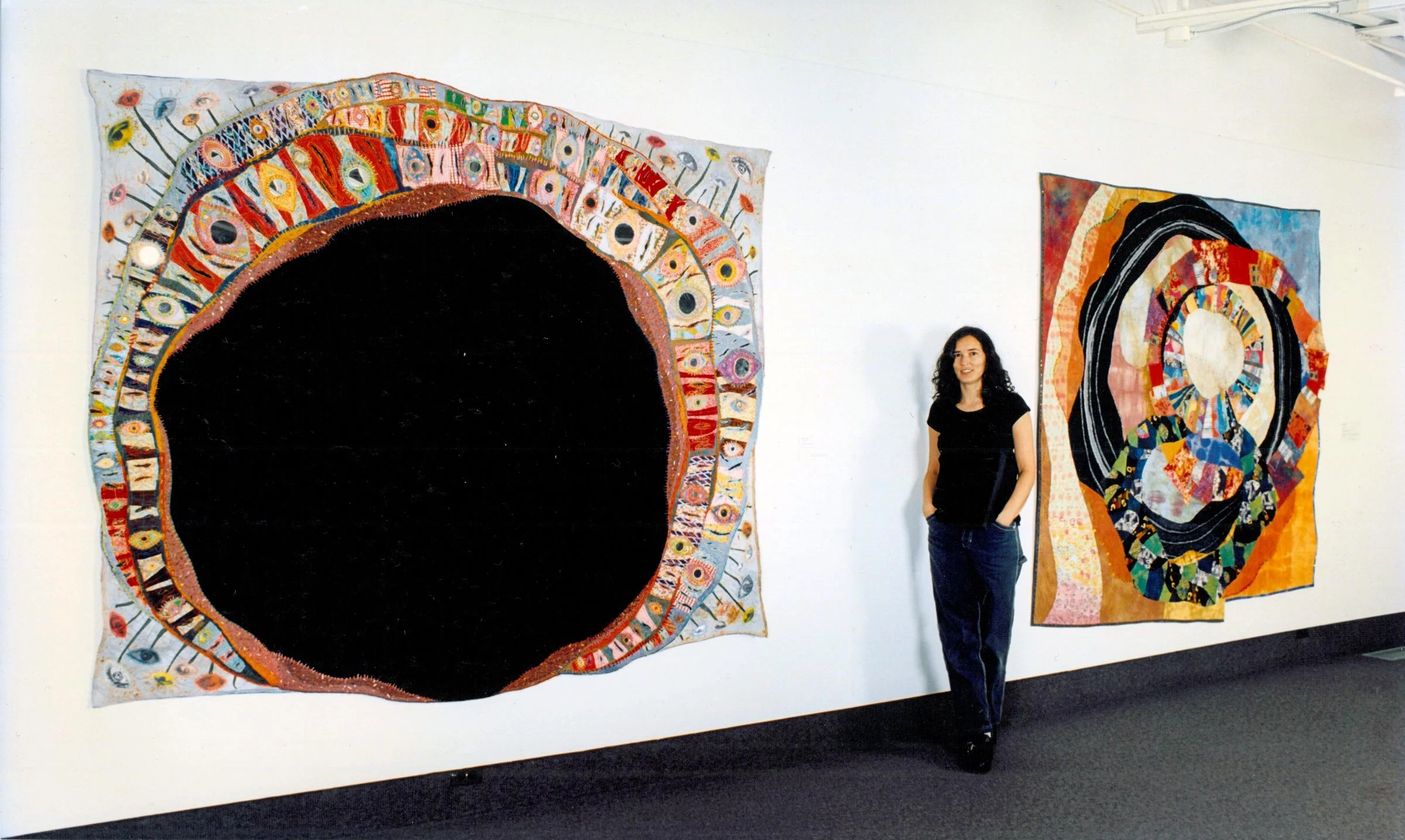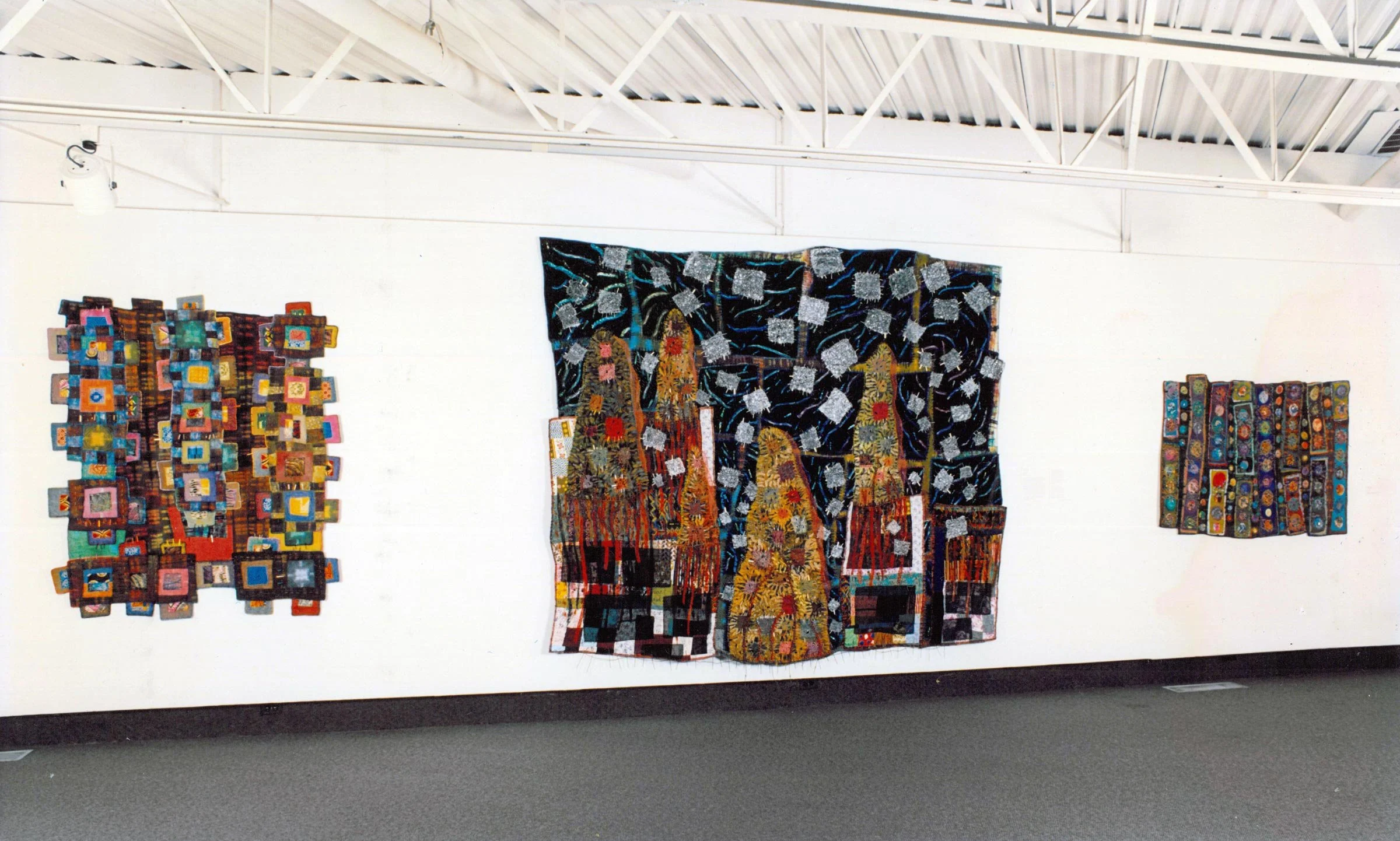Parable Quilts
Parable Quilts uncover a theology that finds grace in the unknown. They push the boundaries of the quilt medium, of art and language, and of our understanding of knowledge in the age of information and technology.
These four large narrative quilts or visual metaphors, work with sacred texts to explore issues of language, the creative process, spirituality and the function of art. By challenging the perception of the sacred text by means of visual metaphor, a dialogue of healing is opened.
Each visual metaphor begins with the exegesis of the text. The power of the written metaphor is located by working with it visually and in relationship to the quilt medium. The process of constructing the piece is improvisational, intuitive, obsessive and mysterious in nature.
Leaven, 1994, is a visual metaphor that speaks about creation and its uncontrollable and unpredictable process. Its text is from Matthew 3:11 in the New Testament, "The kingdom of heaven is like yeast that a woman took and hid in three measures of flour until it was all leavened."
Manna, 1996, follows directly from the Leaven and is about living bread. Sacred texts from the Old and New Testaments ("I am the bread of life") are explored along with issues of sustenance, providence, appetite, our obsession with meaning, and the function of language and art as nourishment. The protected and worshiped piles of hoarded and putrefying manna can be seen as piles of material things or as figures, the rancid manna representing the old ideas we cling to out of fear and as a means of security.
The Empty Tomb, 1997, examines the metaphor, as found in the book of Mark, of the empty tomb/womb, along with ideas of void, absence, and death, as a place of hope and assurance. The void is seen as the epicenter of creation.
Godseye, 1998, explores Ezekiel's vision of the wheel of eyes from the Old Testament, as a metaphor for inner vision and transformation.
Parable Quilts was the title of first solo show at The Southeastern Center of Creative Arts, in Winston Salem, NC, in 1997, and at Duke Divinity School. This body of work was also accepted as my thesis, eight years after dropping out of divinity school, for which I received a Masters of Theological Studies from Candler School of Theology, Emory University in 1998.
Leaven, 1994, 90 x 90 inches, velvet, dyed cotton, prints, organza, paint, beads, hand and machine stitched. Exhibited at the North Carolina Museum of Art in 1996; SECCA 1997. In a private collection.
Manna, 1996, 100 x 110 inches, velvet, died batting, found quilt top, silk organza, melted cellophane, acrylic paint, barbed wire. Hand and machine pieced and embroidered. Exhibited at the North Carolina Museum of Art 1996, SECCA 1997, and on permanent exhibit at United Church of Chapel Hill, NC.
The Empty Tomb 1995, 90 x 96 inches; vintage 70's prints, polyester, velvet, cotton, found afghan, photo-transfer, dyed batting, glass mirrors and beads. Machine and hand pieced, hand embroidered, hand quilted. Exhibited at SECCA in 1997, Quilt National in 1999 and at Quiltcon in 2019. In a private collection.
Godseye, 1998, 90 x 90 inches, velvets, double knits, vintage 70’s prints, organza, found afghan, pins, glass mirrors and beads; machine and hand stitched, hand quilted and embroidered. Exhibited at Quiltcon 2019. In the artist’s collection.










